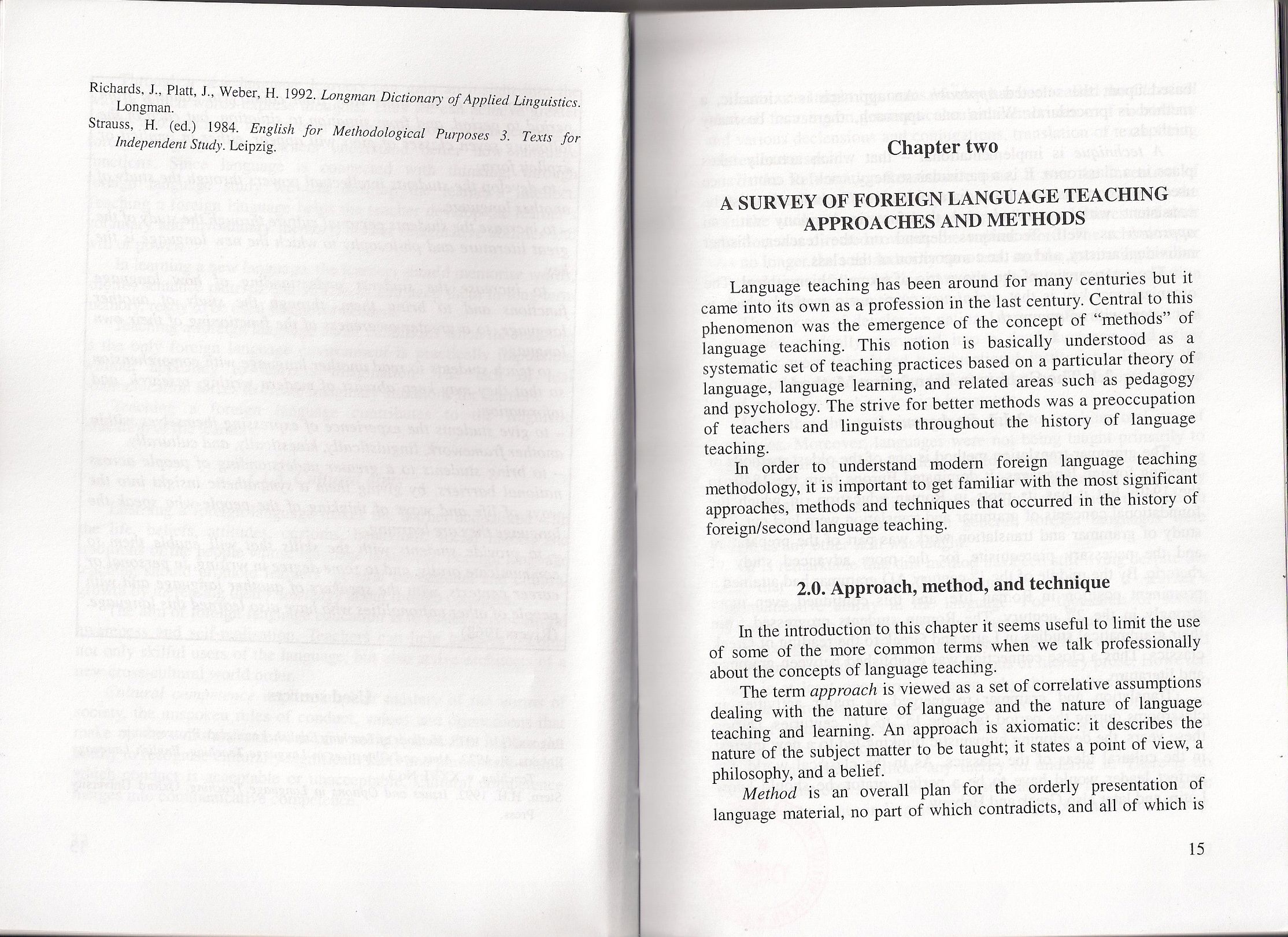76262 skanowanie0007 (84)

Richards, J., Platt, J., Weber, H. 1992. Longman Dictionary of Applied Linguistics. Longman.
Strauss, H. (ed.) 1984. English for Methodołogical Purposes 3. Texts for Independent Study. Leipzig.
Chapter two
A SURVEY OF FOREIGN LANGUAGE TEACHING APPROACHES AND METHODS
Language teaching has been around for many eenturies but it came into its own as a profession in the last century. Central to this phenomenon was the emergence of the concept of “methods” of language teaching. This notion is basically understood as a systematic set of teaching practices based on a particular theory of language, language learning, and related areas such as pedagogy and psychology. The strive for better methods was a preoccupation of teachers and linguists throughout the history of language teaching.
In order to understand modem foreign language teaching methodology, it is important to get familiar with the most significant approaches, methods and techniques that occurred in the history of foreign/second language teaching.
2.0. Approach, method, and technląue
In the introduction to this chapter it seems useful to limit the use of some of the morę common terms when we talk professionally about the concepts of language teaching.
The term approach is viewed as a set of correlative assumptions dealing with the naturę of language and the naturę of language teaching and learning. An approach is axiomatic: it describes the naturę of the subject matter to be taught; it States a point of view, a philosophy, and a belief.
Method is an overall plan for the orderly presentation of language materiał, no part of which contradicts, and all of which is
15
Wyszukiwarka
Podobne podstrony:
img358 (6) 234Druidzi Green, M. Animals in Celtic Life and Myth, Routledge, London, 1992. Green, M.
skanowanie0013 (84) Materiały do zajęć z ogrzewnictwa Tablica 1-10. Wartości obliczeniowe współczynn
skanowanie0015 (84) uph uu muueiu u ck iii. 10Żakiet z zielonego melanżu Rozmiary: 38-42 (44-48) Mat
skanowanie0014 (84) U*
skanowanie0009 (84)
skanowanie0011 (84) wa Kujawskiego, fd<k łączył* się ona 2 kolejami pruskimi (iMl—1M2 r.). Byk) t
więcej podobnych podstron